Period 1500-1750
Overview
For a long time the most northern part of Europe was considered to be the birthplace of the wood-topped iron skate. In the 20th century this assumption no longer held. In the low countries (Holland, Flanders) texts, miniatures and excavations show the use of wood-topped skates in the late Middle Ages. The ‘skates’ in the old sagas at closer research all turned out to be skis, or, in some occasions, bone skates.1
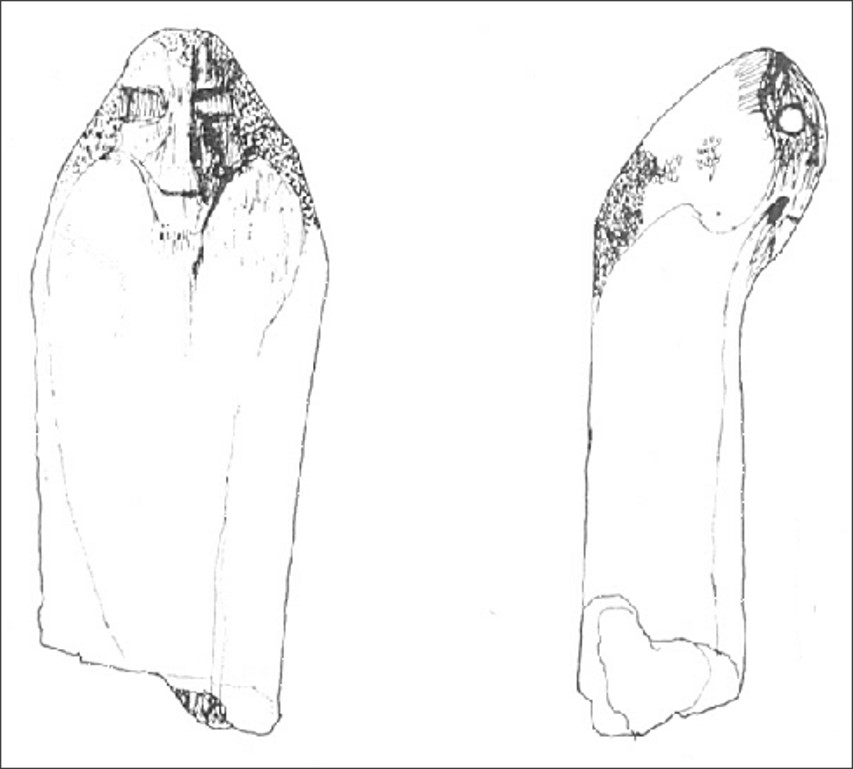
Source: KUML 1968, p. 38
The oldest showpiece skate?
Bone skates, which I will not deal with extensively here, remained much longer in use in the Scandinavian countries than in Holland. Some remarkable samples have been found, such as a fragment of a bone glider in Viborg, in the north of Jutland, Denmark, in which a human face was carved.2 (fig.1)
Whether it was the result of an artistic expression or a product of boredom, must be left undecided, but exceptional it was. Because decorating bone objects was usually applied to more durable tools than gliding bones.
Iron glider vs bone skates
In the first quarter of the 16th century Olaus Magnus mentions that not only animal bones were used for skating, but smooth and polished pieces of iron as well.3 In skating literature it is usually taken for granted that ‘real’ skates, with a wooden footstock and accompanying ties, were meant by them. Below, in Evolution of types of skates 1500-1750 / Iron glider I will question this point of view.
Perhaps the bone skate itself stood in the way of the development of a wood-topped iron skate. After all, bone was easy to work, amply available and therefore cheap. Until about 1800 AD iron would remain an expensive raw material that could cost many hundreds of crowns per kilo.5 During the Middle Ages a horse’s bit for instance was more expensive than the animal itself and because of its high prices poor people continued using wooden plugs instead of nails for a long time.6

Gliders on bone skates
Source: Alvin-portal.org
Skritsko and the like
When exactly the real wood-iron skate made its entry in Scandinavia is not known, but we do find some indications in the language. In a dictionary from 1640 the Latin ‘calopodium ferratum’ is translated literally with ‘jernsko at löpa på Ijsen med, som skijder och ijsleggior’ (iron shoe to walk with on the ice, like skis and bone skates).7 That seems a clear description, but does not sound very original, which could indicate that the compiler had no idea what a skate was.
Johan Ekeblad however, who held a post at queen Kristina’s court in Stockholm, did certainly know what he was talking about. Mid April 1652 he wrote in a letter to his brother Claes ‘... iagh ... försökte till att löpa på skritsko’ (I tried to skate).8 The word he used is very similar to Middle Low German ‘schritscho’.9
Akin to it is the Middle Dutch ‘schricschoe’ or ‘scricscoen’, that appears in texts from around 149010.
Etymologically ‘skritsko’ could have been adopted both from German as well as directly from Dutch. From Ekeblad’s pen – he had studied rather shortly before at the university of Frankfurt at the Oder – we could take ‘skritsko’ as a Germanism, but the word soon became current and was corrupted to ‘skricksko’, ‘skrillsko’ and ‘skrinnsko’ in Sweden at an early stage11.
Around 1650 also in Denmark both men and women took to the ice with a ‘skredsko’ or ‘schredschou’.12 Apart from ‘skredsko’ also the word ‘skejte’ (later ‘skeiter’) was current there, as opposed to ‘skøjte’, that was not yet noted before 1700.13
It is not clear when ‘skjese’ or ‘skeisa’ (plural: ‘skeiser’) originated. Professor Hjalmar Falck assumed an influence from English. He explained the development from ‘skejte’ to ‘skøite’ from the singular ‘skate’ and that from ‘skjese’ to ‘skeise’ from the plural ‘skates’. In their turn both English words were assumed to originate from Dutch ‘schaats’14.
Despite all Dutch involvement in Sweden - from 1619 onwards the new city of Gothenburg was largely put on the map by Dutchmen and investors from Holland realised a number of industrial projects elsewhere in Sweden - a direct, early-sixteenth-century introduction of the 'schaets' from the Netherlands etymologically does not seem to have strong papers.
That Norwegian and Swedish, languages that are very similar to each other, both have their own word for ‘skate’, makes it plausible that the object was introduced into Scandinavia via different routes. Supposedly the ‘German’ route was somewhat older than the ‘English’ one.
No skates in attack across the ice
The skate probably didn't spread fast enough to play a role in one of the strongest feats of martial history of all time: the incredible risky crossing of the Swedish army in 1658 over the ice of the Little Belt and other Danish straits on the way to Copenhagen.
Although in his book Fältskärns Berättelser the Finnish narrator Topelius introduces a scout of the Swedish army, who returns on skates over the stiffly frozen Little Belt15, the army of King Karl X Gustav would not have used this means of transport at all.16 The circumstances were not right for that either. Under the weight of so many foot people, cavalry, artillery and waggons there was a lot of water on the ice.
Nevertheless, the unforeseen siege of Copenhagen posed such a threat to the Danish King Fredrik that he was prepared to give up the southern Swedish provinces, which the Danes had held for some three centuries, in return for peace.
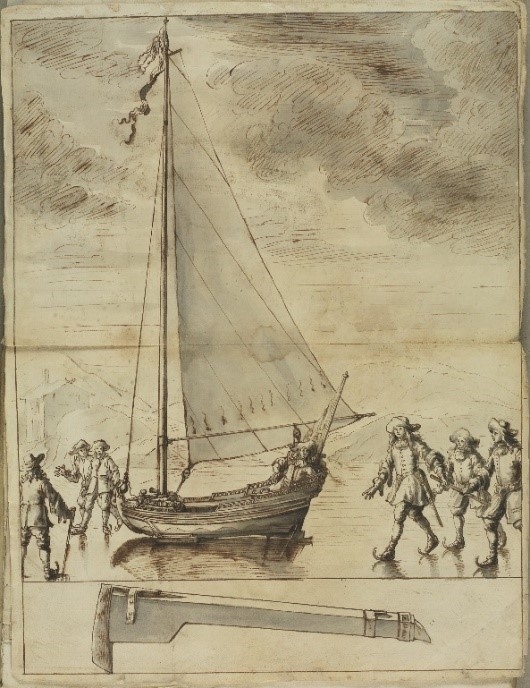
Notizie di Svezia by Lorenzo Magalotti, 1674.
Source: Alvin-portal.org
High prows
Finally, around 1674, some skates turn up with high running prows. (fig.4+5) It seems that the people close to the ice boat are not quite used to their skates yet. The party, well-to-do judging by their clothing, is probably skating at Lake Mälaren, which flows into the Baltic Sea near Stockholm.
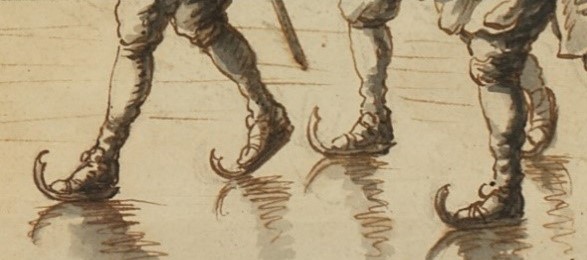
by Lorenzo Magalotti, 1674, detail.
Source: Alvin-portal.org
Although there is no sideward push yet, pushing off with a pricker is no longer the case. There is no doubt that this picture is Swedish and was made in 1674 for the travel account of Lorenzo Magalotti; even though this Italian diplomate could not have seen any skaters or ice boats himself between June and September that year.17
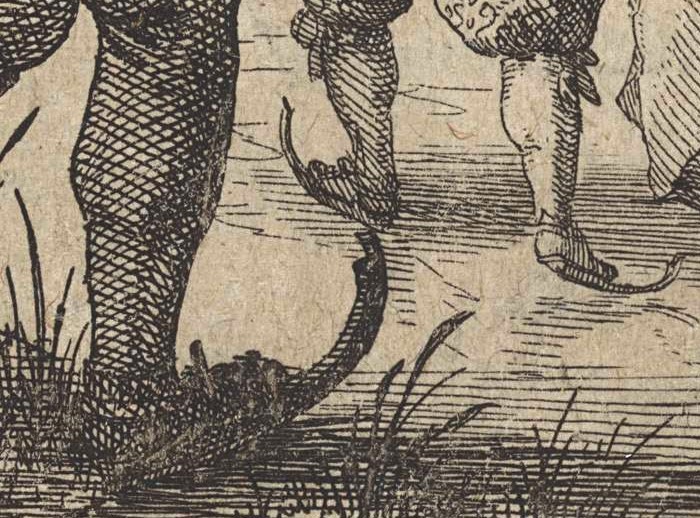
Rijksmuseum Amsterdam RP-P-OB-2396
The skates look very familiar to Dutch models from the 17th century and the prows turn over even a bit more than the high ones that were pictured by Dirck Pers around 1610. (fig.6) Despite the similarities we do not know whether the skates in the picture were imported from Holland or are an authentic Swedish model of its own.
No elitist pastime
Not only the 'kavaljerer' from 1674 and the aforementioned court official Johan Ekeblad prove that skating was a popular activity in better circles. Carl von Roland, who served in the army of King Charles XII of Sweden and was a prisoner of war in Russia in 1708, was treated so well there because of his rank that 'skrillskor' were made for him. Together with a few other officers, he was able to show how well he had learned to skate in his youth. Without paying attention he ended up on thin ice, fell through and was eventually rescued by an Italian colleague.18
Nevertheless, we must be careful not to paint a one-sided picture of the skating enthusiasts. Although diaries and reports were often written (and kept!) by and for people in higher positions, we can safely assume that around 1700 the average citizen also started using wood-iron skates. For I cannot imagine that the punishment of ten canings for violating the 'ice law', which King Fredrik I issued in 1737, was intended for the aristocracy:
'Those who venture on the ice, with or without skates, before it is so strong anywhere that it can carry man and horse with complete certainty and permission has been granted in public by the competent authority from the pulpit, will be punished for this with 10 whips or canes and all who drown in such circumstances will be considered suicides and their corpses, if found, will not be buried in the churchyard.'19
Even back then, heaven and earth had to be moved to keep the hardened lover of skating off the ice!
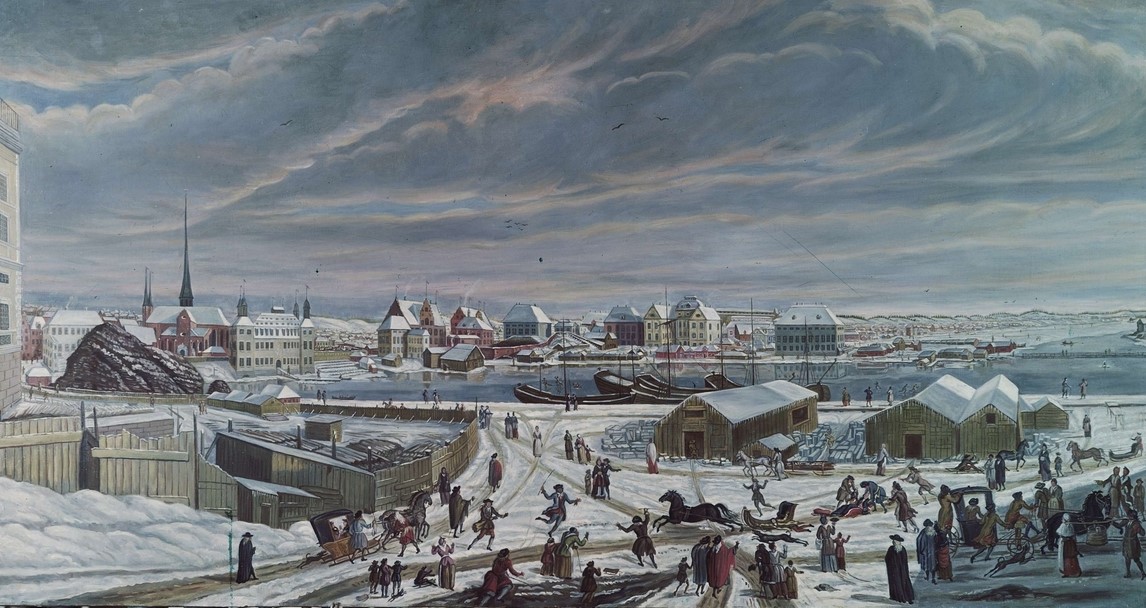
Unsigned oil painting from the beginning of the 18th century with some reserve attributed to the battle painter Johan Philip Lemke.
Photo and collection: Nordiska Museum NMA.0029848
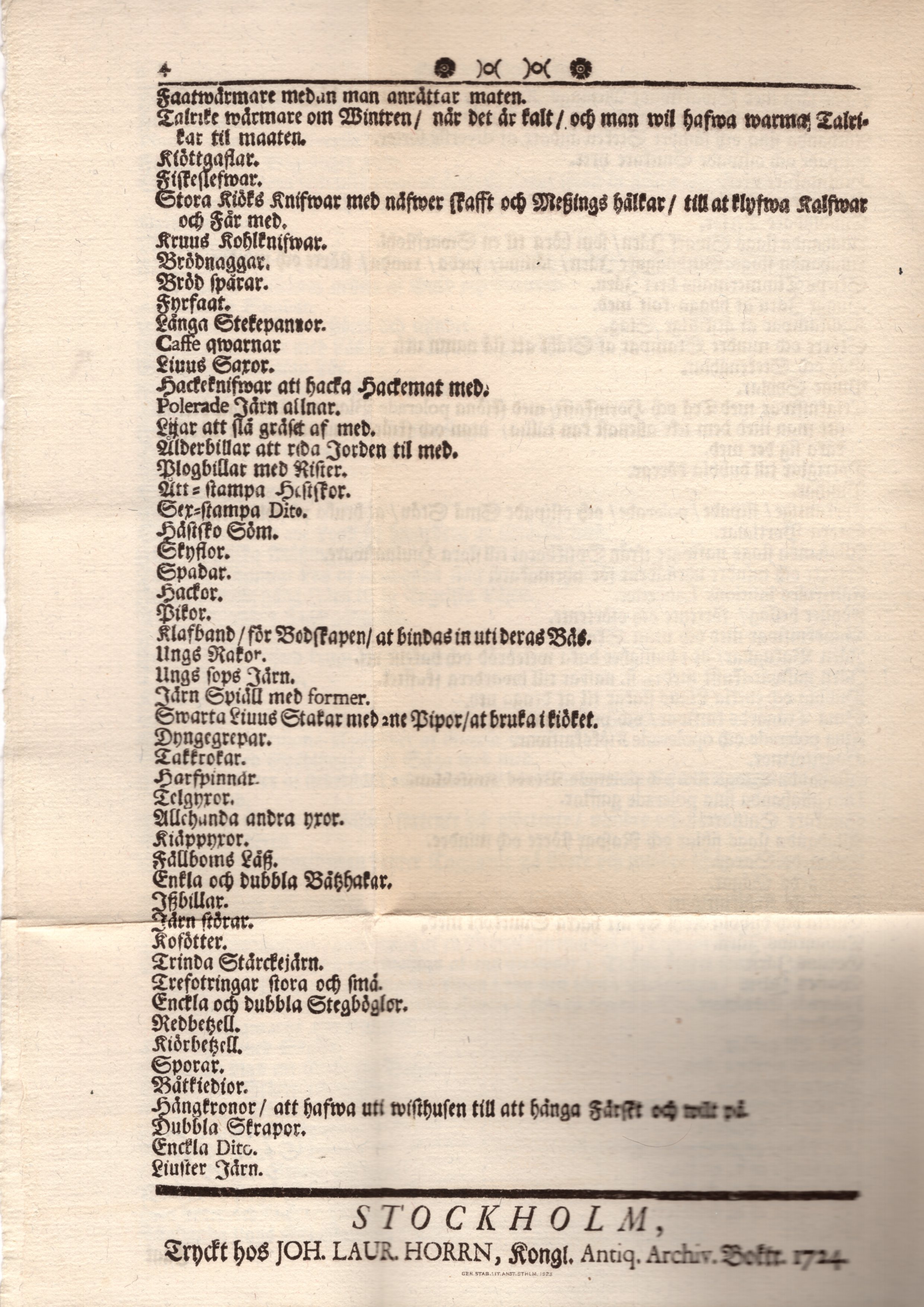
which was located about 85 kilometres north east from Eskilstuna.
Some 150 single products are mentioned in the list, among which ice axes, but no skates.
Enclosure 3 from: Carl Sahlin - Vår järnindustris äldsta reklamtryck, 1923.
From import to imitation?
Nevertheless it seems probable that Dutch models, introduced in Sweden and eventually also in the other Scandinavian countries between 1600 and 1650, were copied rather soon. This will have posed few problems for blacksmiths who knew how to weld and harden, such as for example the scythe makers from the north of Dalarna County, who supplied the whole of Sweden and the area just across the Norwegian border with scythes20. But from the documentation that I was able to find about the activities of no fewer than some 350 blacksmiths that were active in Lima around 1650, it does not appear that they actually made skates.21
Around 1725 factories and iron works in Sweden started advertising by means of printed matter such as price lists. At first leaving some space for speculation, they soon contained very detailed lists of all kinds of blacksmithing products. Unfortunately skates, as opposed to for instance ice axes (isbillar) and crampons (broddar), are not mentioned in them.22(afb. 7+7b)

This even holds true for Eskilstuna, which later had such a reputation for skate making. In so-called specifications for iron ware that was produced by Carl Gustafs Stads manufakturverk, as the complex of small Rademachers smithies was named, skates are not mentioned.23 If any skates were produced there at all, they might have been custom-made for some single individuals, but it is more likely that skate making was an in-between job for local horse shoeing smiths in villages and towns, and for farmers in remote rural areas who knew how to forge.
Evolution in types of skates 1500-1750
We hardly have any information about Scandinavian skating models from the period up to 1750. The iron skates that Olaus Magnus described in the early 16th century were probably no more than a bar of iron the length of the foot, and still without footstock or binding. In all likelihood, a pole was needed to get forward.
Eventually, those primitive iron runners, and possibly also contact with the low countries, will have led to models with an increasingly narrow piece of iron vertically placed under a wooden footstock. At the front, the runner probably ended in a gradually rising tip (hook toe) or a simple curl.
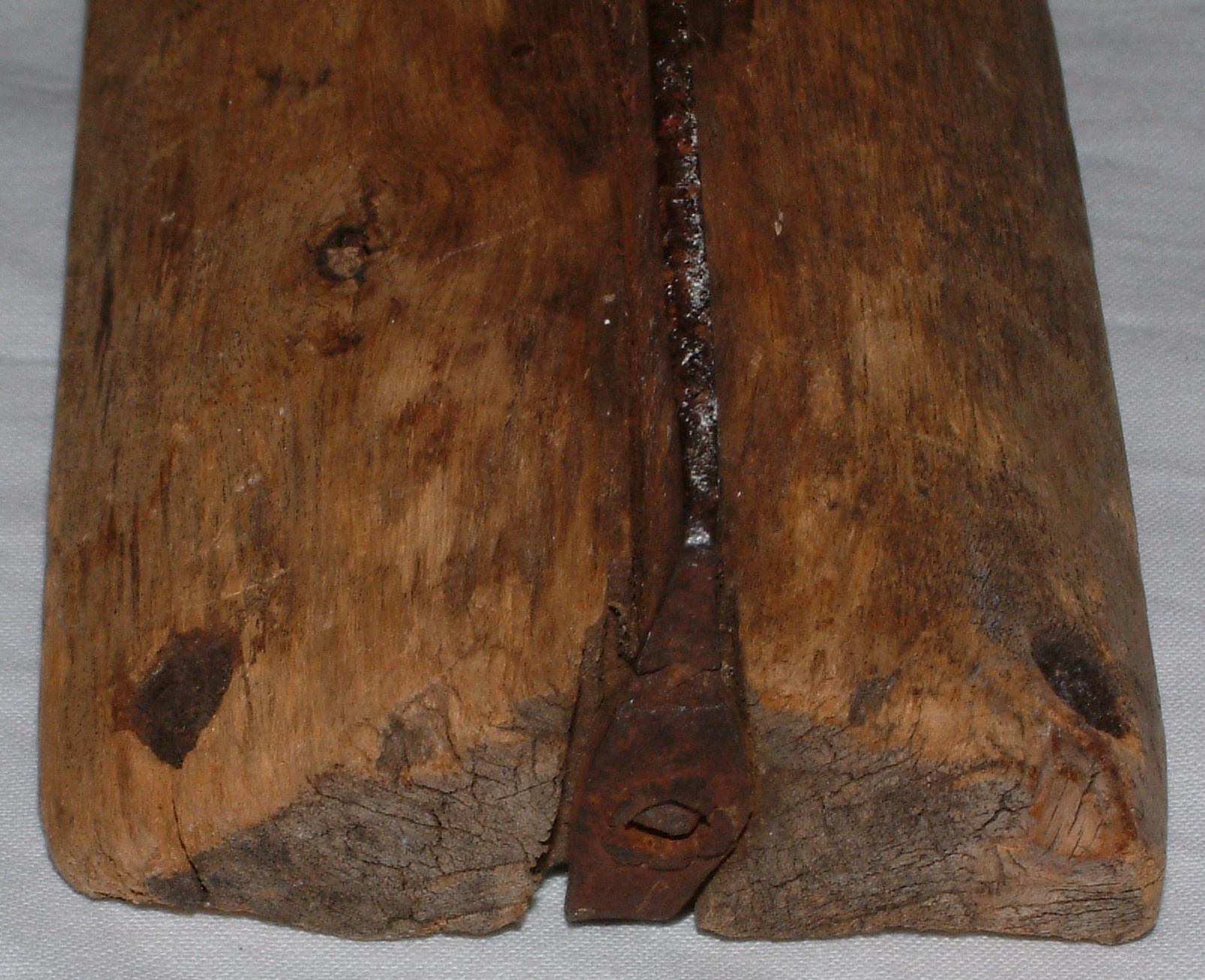
Formerly collection Biegelaar
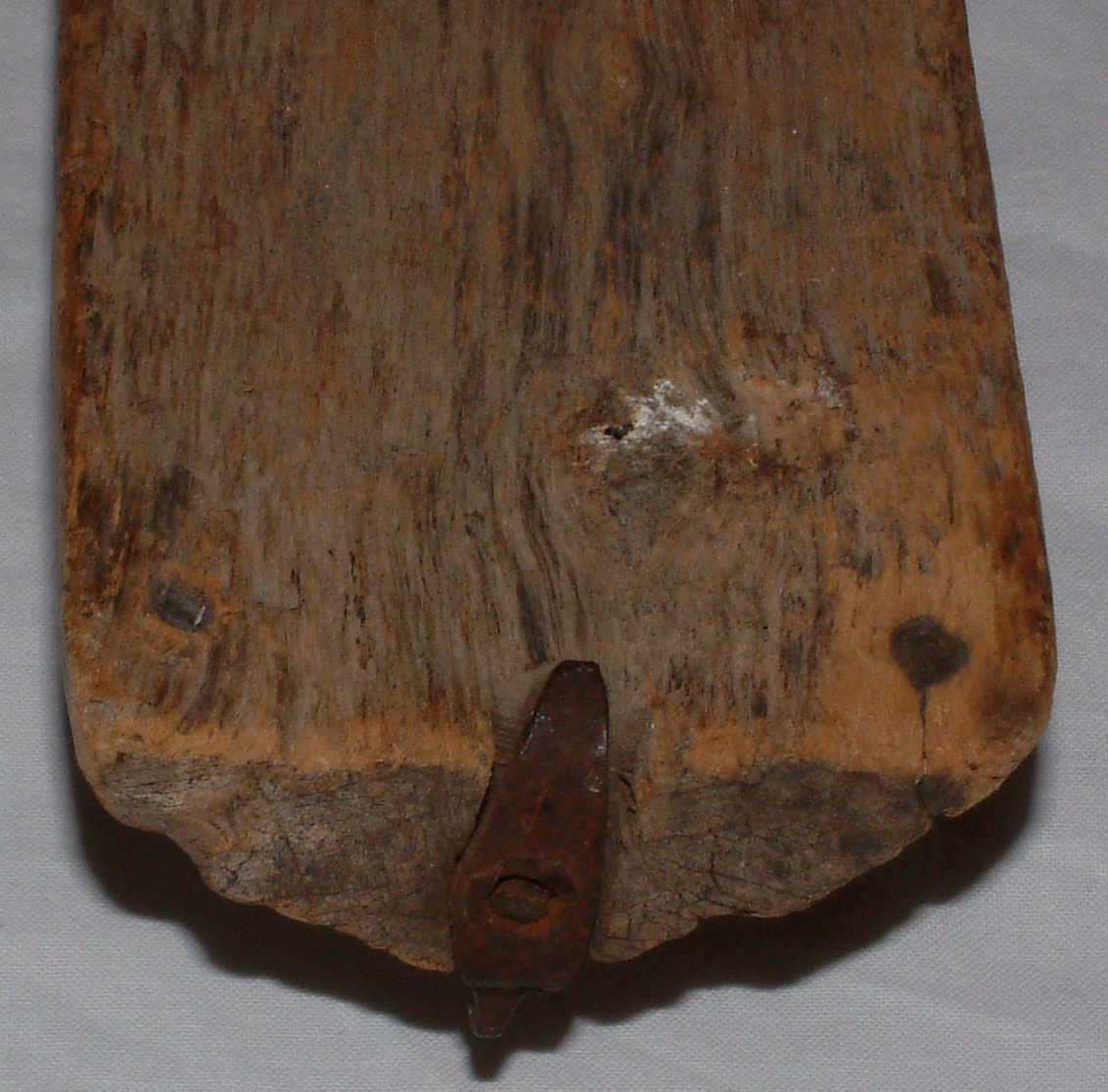
Formerly collection Biegelaar
At the back, it ran to the rear end of the footstock, around which it was doubled. A feature that not only the earliest Dutch skates show, but also primitive Scandinavian models from around 1800, as we will see in the next chapter.
Nevertheless, in Scandinavian skates a runner under and around the heel does not serve as a measure for an early date of such a skate, because this primitive-looking connection was used for a long time, especially in rural areas. The Odaler sletskøite, for example, a low, flat skate from Norway with a cramp that connected runner and stock behind the wooden heel, still occurred in the years 1860-1870 .
Although the early development of the Scandinavian skate is difficult to trace, the rather sudden introduction of the word skridsko, which was practically a loan word, at least suggests that one or more foreign models surfaced between 1600 and 1640 at the latest, which were significantly different from what was previously common in the far north. The high toes that we see in the pen drawing accompanying Megalotti's travelogue are an extreme example of this, but it could very well be that other models were current as well.
In Scandinavia, the switch to the skate with a screw through the heel of the stock, i.a. with runners that ended half-way under the wooden heel at the back, is almost certainly due to foreign influence, either directly from Holland or via a detour from Germany or England. It is not clear from what point in time indigenous curled and hook-toed skates with mid-heel runners were actually made. This development may not have taken place until about 1700, or even after 1750. From Scandinavia, early archeological finds of such skates are not known to me and copies of this model from the 17th and even the 18th century are missing in the collections of the most important museums.1
Iron glider
Olaf Mansson from Linköping (Sweden) travelled Scandinavia as a priest selling indulgences around 1520. Many years later, when as a faithful Catholic he had already been banned from Lutheran Sweden for a quarter of a century3, he wrote his bulky Historia under the name of Olaus Magnus. In this book he mentions that for skating not only bones were used, but smooth and polished pieces of iron as well. Like bone gliders those blades were as long as the foot itself and needed slippery ice to move swiftly. However well they were polished or smeared, the blades usually did not beat the broad shanks of deer, which, smoothy planed and rubbed with pig lard, were hindered less by bumps in the ice.4
In skating literature it is usually taken for granted that ‘real’ skates, with a wooden footstock and accompanying ties, were meant by them.
We at least need to make some marginal comments on that. To begin with it seems odd that iron skates could not hold their own against the deer shanks. With a good sideward push, virtually impossible on bone runners, and a strong forward stroke one would expect that the skaters would easily keep ahead of the pricking gliders. Besides, Latin, the international language that Olaus Magnus used, does not have a specific word for ‘skate’. For clear comprehension therefore the object needs to be described in more detail. However, in his account of the ‘ferro’ (blades) Olaus Magnus does not use the words wood or footstock at all.
That seems a rather poor description for somebody who discussed bone skates, skis and crampons with far more detail. Did the banished bishop run out of words to describe skates or had real skates not yet been invented? Did ‘skaters’ simply use wide bars of iron (‘as long as the foot itself’) and push themselves forward with prickers, like they did with bone skates?
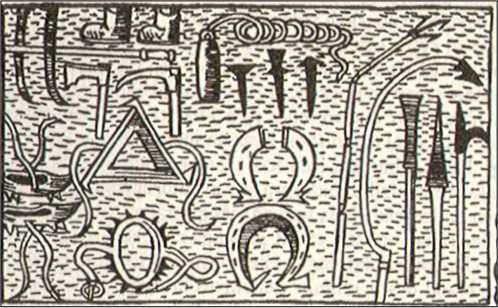
Ice tools with bone skates or iron gliders and pricker
in the upper left corner.
Source: Alvin-portal.org
We more or less find the answer with Magnus himself. The woodcut that accompanies the chapter about ice tools shows, apart from ice axes and other accessories (fig.2), no fewer than three kinds of footwear with spikes, but no skates whatsoever. Unless objects in the upper left corner, in between which very appropriately a pricker is shown, are meant to be skates. Footstock and ties however are lacking completely, while details like these are depicted with a lot of emphasis in other footwear. Presumably the objects in the upper left corner are therefore meant to be bone gliders.
Since it seems not very plausible that ‘real’ skates would have escaped widely traveled Magnus’ attention, I take his ‘ferro’ that could not keep up with the smeared deer shanks for simple iron gliders.
Hook-toed and curled skates
Nevertheless, hook-toed and curled skates were probably commonplace well before 1750, as we can tell from the rather uniform way in which the toe of skates from the period that immediately followed (1750-1800) was executed. In addition to some skates with turn-over curls, the vast majority of specimens are equipped with a minimal curl on the tip of the hook toe. An intermediate form that gives the impression that hooks and curls had been in circulation for much longer.
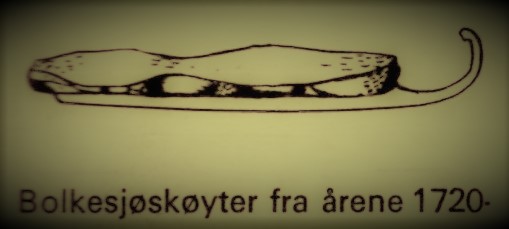
For example, the board room of the Oslo Skøiteklub in the Frogner Stadium housed a simple curled skate from the vicinity of Bolkesjø in Telemarken that would date from the 1720s.2 Although the dating of this skate is not further justified or explained, such a claim could nevertheless be correct.
Hook-toed skates (Snabelskøyter; Snablar; Snudeskøyter)
Pointed or hook-toed skates were indicated by different names. In 1867 Falck-Ytter mentions skates with a forward and slightly bent up 'Snude'.3 The word means snout or muzzle, and also the tip of the shoe was called this way.
Almost 25 years later, Urdahl writes: '... the usual wooden skate ... which often resulted in a large, pointed 'Snabel', which could be very dangerous in the event of a fall.'4
Also the word 'Snabel' literally means muzzle, but could also be the trunk of an elephant.
Both gentlemen undoubtedly described the same type of skates. Afterwards, however, the term 'snabelskøyter' - in a Swedish context I came across the word 'snablar' - has also been used for ice skates with a curl and later even for skates with flat curls. In this series of articles I will use the (once) established terms 'snudeskøiter' and 'snabelskøiter' for all kinds of skates a slightly raised prow and rather pointed hook, even if this hook (often provisionally) is bent back in a small curl. Only when the curl is substantially turned over or forged wide the description curled skate will be used. A skate with a flattened curl the width of the shank, falls into the category flat curled skate.
%20snabel%20primitieve%20hak.jpg?1620225425213)
Daniel-9. Collection Erwin Daniël, Emden, Germany. Despite the minimal curl and the extremely ‘full’ toe, I classify this skate as hook-toed.
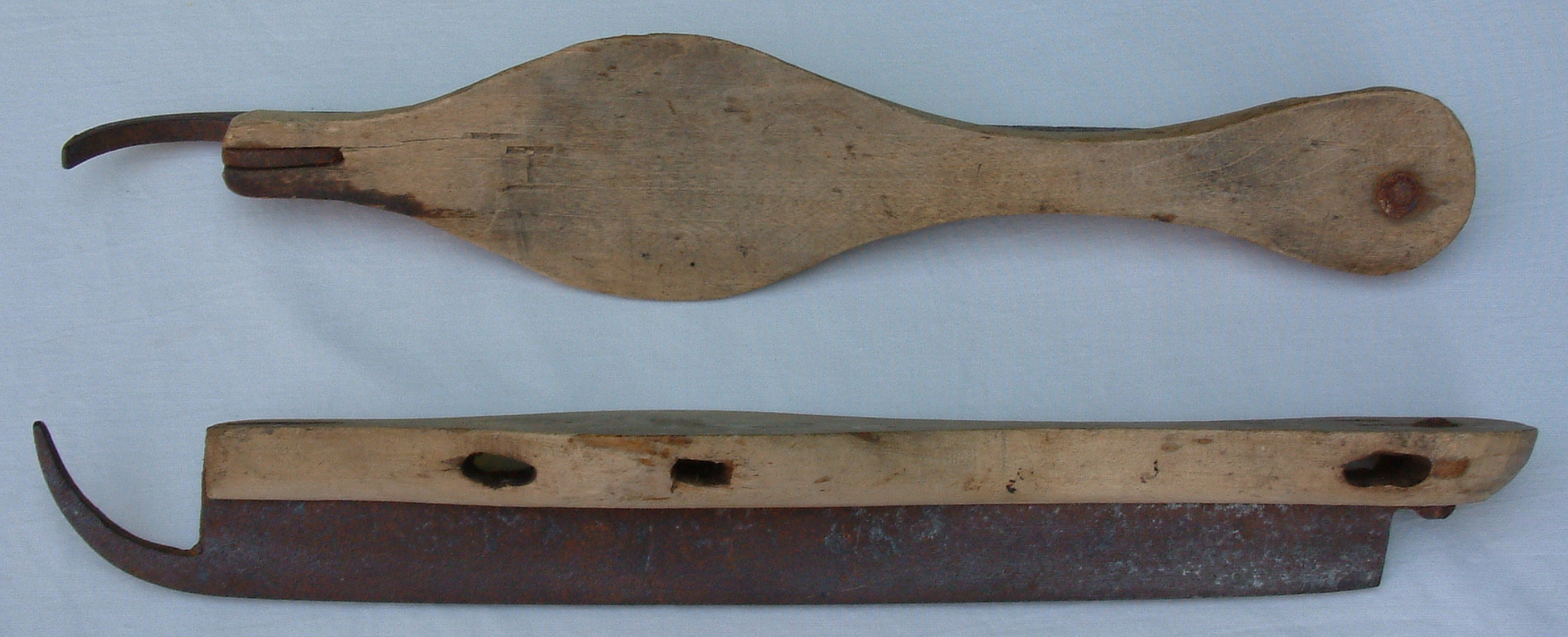
Collection Teun Wanink, Netherlands
Hook-toed skates from the southeastern province of Blekinge were invariably called 'kuggebodaskridskor' by the locals. The name referred to the skilled blacksmith Pål Johnson and his descendants from the hamlet of Kuggeboda, municipality of Listerby. I will discuss both blacksmith and model in the chapter Skatemakers 1800-1850.
Curled skates (Spiskrokar, Krullskøiter)
Because of their appearance, curled skates in Sweden used to be called 'spiskrokar'. A 'spiskrok' (plural: 'spiskrokar') is an oven hook to pick up the rings of the 'kakelugn'5 with.
Afterwards, however, the concept of 'spiskrokar' faded and became a collective word for all kinds of skates of various models, such as the club toe with its flat curl and even for hook-toed skates. Such a broad meaning encourages misunderstandings and therefore I will use 'spiskrokar' exclusively for skates with a turned-over curl.
Curled skates were also called 'krullskøiter' in Norway, a word that will have popped in from the Netherlands sooner or later.
Curled skates might come in some special variants, such as the closed curl and the outward curl. These sub-models are dealt with later.
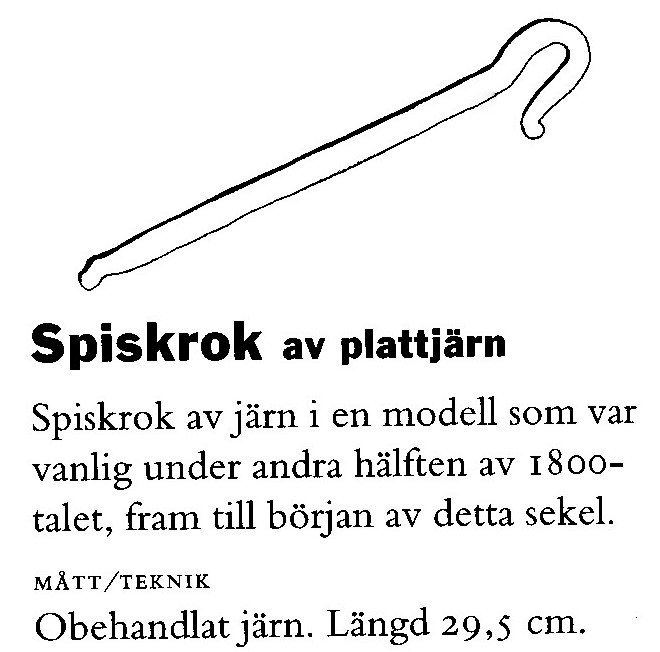
Courtesy Stefan Flöög, Blekinge Museum, Karlskrona, Sweden
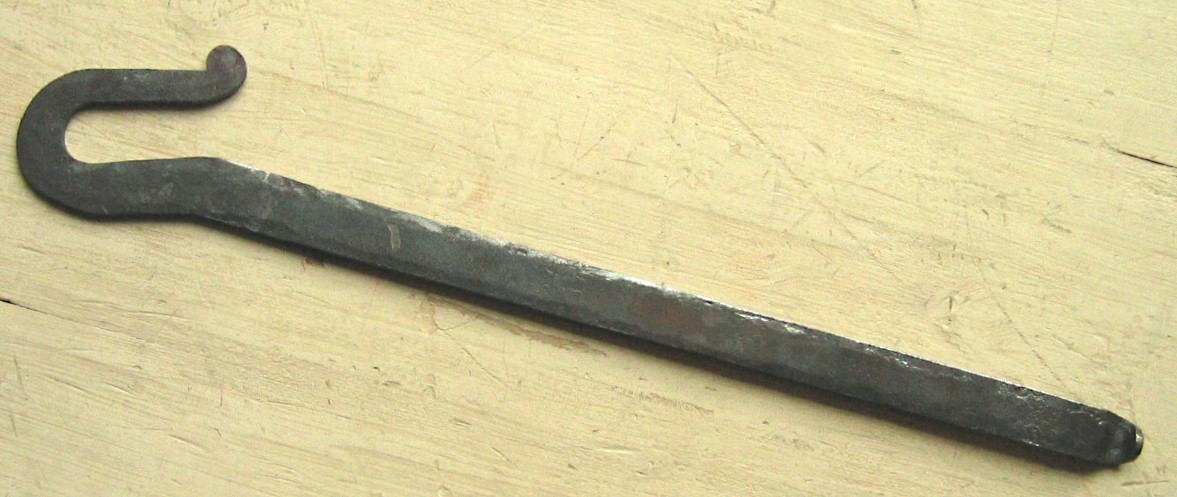
Photo Torbjörn Pedersen
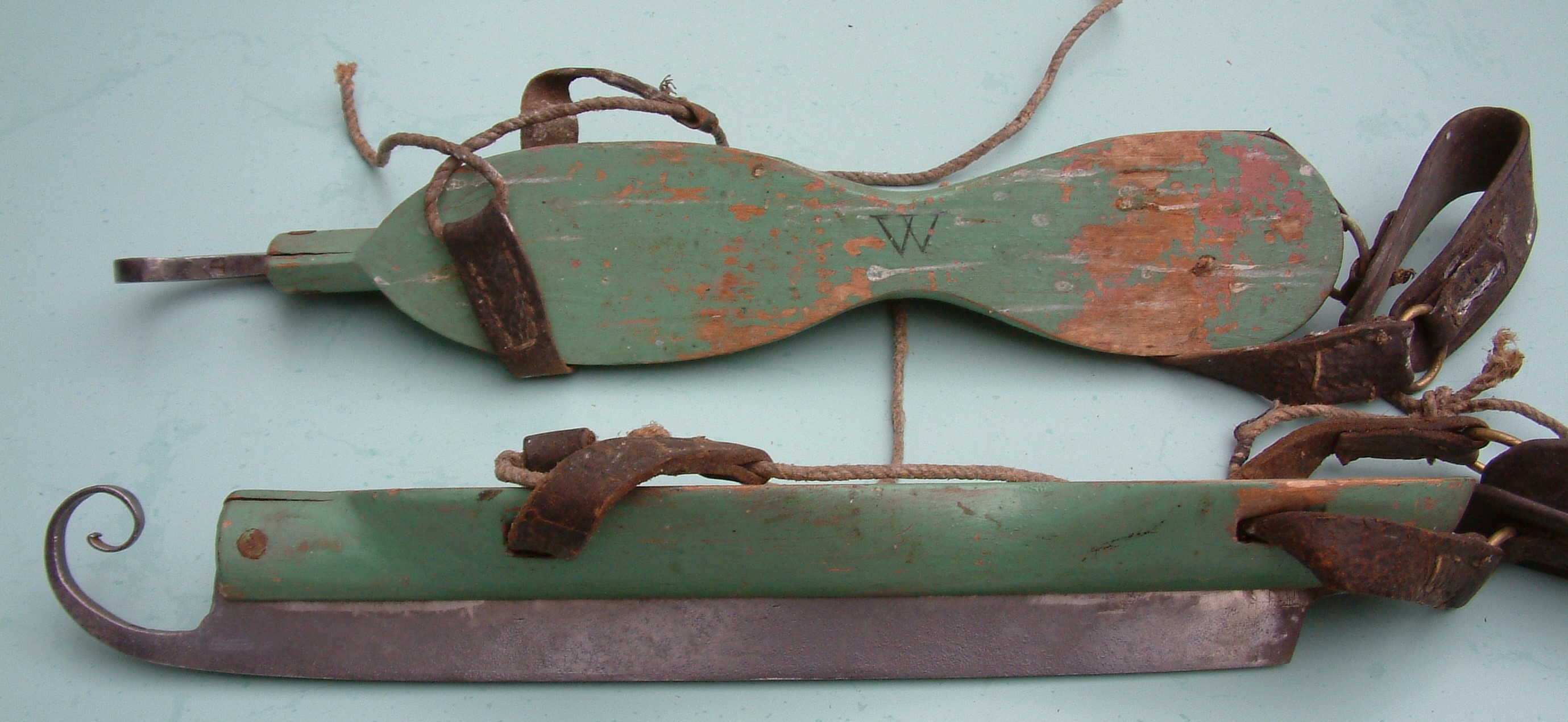
Skate makers 1500-1750
Up to 1750 skates were presumably made by local horse shoe smiths in villages and towns, and by farmers in remote rural areas, who knew how to forge. Data about these occasional skate makers are not known.
No evidence has been found for the production of skates in small iron works in the first half of the 18th century. Nevertheless, we must not completely rule out this possibility.
Candidate maker(s) of the Bolkesjø skate (1720s)

We do not have any information about the maker(s) of the curled skate that was said to be from the vicinity of Bolkesjø in Telemarken, Norway. In all likelihood it concerned a local farrier or peasant smith from the area.
Over the centuries hundreds of similar local smiths must have occasionally made skates.
Candidate skate makers: scythe smiths from Lima and surroundings
The scythe makers from the north of Dalarna province knew about welding and hardening metals. Around 1650 no fewer than 350 blacksmiths were operating in Lima and surroundings, who provided the whole of Sweden and the Norwegian border region with scythes.1 Whether they actually produced skates at the time, is not evident from the documentation I have been able to find about their work.2
Candidate skate makers: Rademacher smiths from Eskilstuna

Like Remscheid in Germany, Eskilstuna had everything to become a significant place in the steel industry. Ore and charcoal were extracted in the environment and water that could set the wheels of the hammer and grinding works in motion flowed sufficiently. Already around 1600 the fire raged in the melting furnaces of the 'bruk' (factory) to supply the nail and weapon smiths with wrought iron for the benefit of the army and fleet.
In 1656, the Dutchman Reinhold Rademacher was more or less forced by the Swedish King Charles X Gustav to transfer his 'manufakturverk' (factory) in Riga (Livonia, now Latvia, then under Swedish authority) to Eskilstuna. He brought with him twenty master smiths from the Baltic region who started working in the Rademachersmedjorna. Around this complex of smithies Karl Gustav city was built. In return, the king gave the community the exclusive right to all kinds of smaller forgings such as axes, locks and knives for twenty years.3
Skates were not mentioned in any documents, as far as I know, but were possibly made as an occasional product. About seven old 'Rademachersmedjorna' have been preserved and are open to the public.4
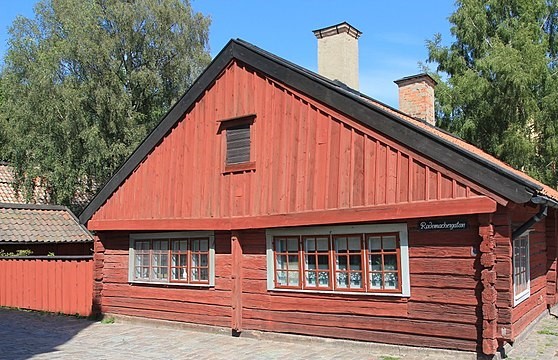
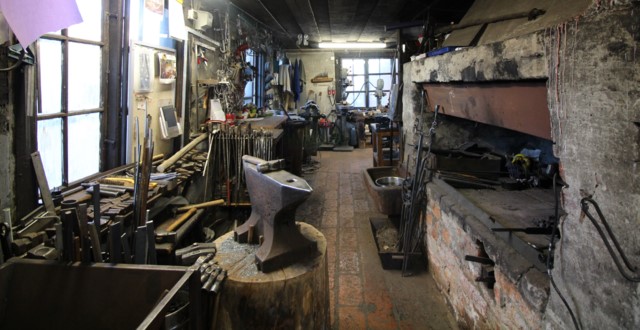
What do you want?
Back to the main menu of Scandinavian skates.
Straight on to the next chapter, 1750-1800.
Read further about Eskilstuna in the era 1750-1800